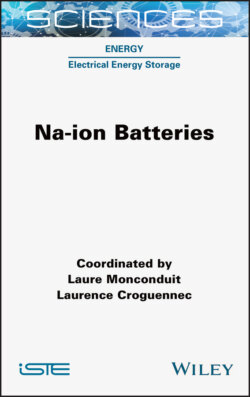Читать книгу Na-ion Batteries - Laure Monconduit - Страница 39
1.5. Summary and prospects
ОглавлениеPartial substitution of various metals for 3d transition metals in sodium layered transition metal oxides is efficient to modulate their electrochemical properties. An unique variety of sodium layered oxides is attractive unlike lithium layered transition metal oxides. Actually, selection of transition metals and dopant elements controls the crystal structure, electronic/ionic conductivity, moist air–resistant property, phase transitions during Na (de)intercalation and surface reactivity with the electrolyte.
This chapter’s role of mainly reviewing the 3d transition metal elements will help to further enhance electrode performance of layered sodium transition metal oxides as positive electrode materials for Na-ion batteries. From previous studies on Li-ion, Na-ion and K-ion batteries, not only the study on positive electrode materials but also comprehensive studies with negative electrode materials, current collectors, binders, surface coating and concentration gradient of active materials, and electrolyte salts and solvents, etc., are also required to enhance overall performances of Na-ion batteries. Even if a huge demand of lithium resources is actualized for the Li-ion batteries in transportation applications and there is a risk of undersupply of lithium resources, which are distributed unevenly in the Earth’s crust, further developments to enhance not only energy density but also cycle life and safety are, of course, required for the stationary use of Na-ion batteries. Furthermore, unique and featured advantages over Li-ion have been found and will be further desired for practical performance of future Na-ion batteries.
The advantages of lower Lewis acidity, weaker Coulombic interaction and smaller crystal ion size for Na+ than Li+ ions are the key to maximizing the characteristics of Na-ion batteries, whereas the hygroscopic property of sodium transition metal oxides is similar to that of LiNiO2-based materials. As development of high capacity LiNiO2-based materials is desired in next-generation Li-ion batteries, new findings and chemistry to control the hygroscopic issue are still being developed (Bianchini et al. 2019).
Similar progress is also sometimes expected in layered sodium transition metal oxides such as the hygroscopic property and coverage of alkali metal carbonate on the oxides disturbing phase transitions, possibly, at least until the 2040s. Therefore, interactive research and developments between Li-ion and Na-ion (possibly K-ion) batteries are believed to lead to a positive effect on the fundamental understanding and realization of sustainable energy technology.
